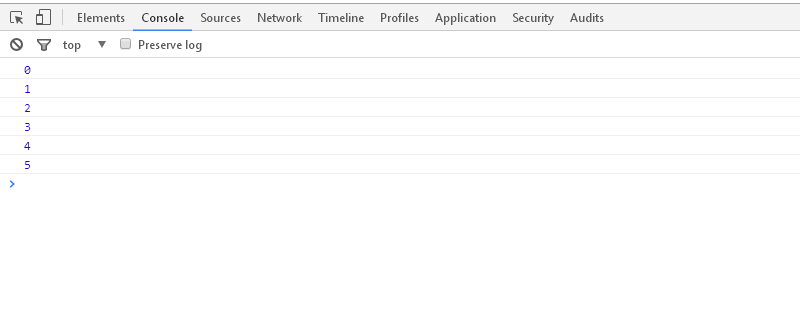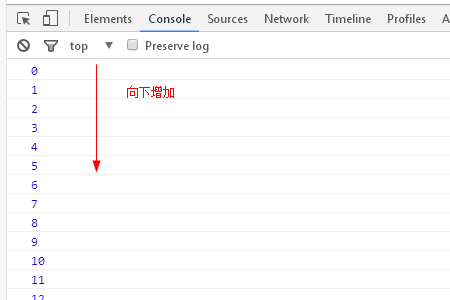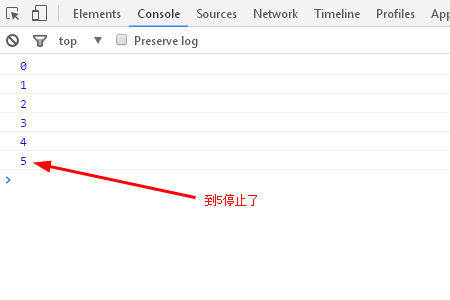How to use setInterval in JavaScript
When browsing the web, you may see slides or dynamic changes of images and text at regular intervals. So how is this dynamic effect achieved? In fact, this can be achieved through JavaScript timers.

There are two types of timing processors in JavaScript: setInterval and setImeout. Both are very similar JavaScript functions, but the specific actions are slightly different.
Today we will take a look at the usage of setInterval timer
setIntervalCan perform specific operations according to the specified period (in milliseconds) Processing (calling a function or evaluating an expression).
The basic syntax is as follows
setInterval(function函数,固定的时间[,参数1,参数2,参数3,.......])
function is the definition of a function. Use a comma to distinguish a fixed time (milliseconds). The parameters of the function are specified in [].
Let’s look at a simple code below
<!DOCTYPE html>
<html lang = "ja">
<head>
<meta charset = "utf-8">
<title>JavaScript</title>
</head>
<body>
<script>
var count = 0;
var countup = function(){
console.log(count++);
}
</script>
</body>
</html>Prepare the count variable, take 0 as the basis, count and add one by one (count), and then use console.log to output. And put this series of processing into the variable of countupp.
Suppose you want to repeat the counting of this variable with a period of 1000 milliseconds, you need to add setInterval
The code is as follows
<script>
var count = 0;
var countup = function(){
console.log(count++);
}
setInterval(countup, 1000);
</script>The running effect is as follows: time will keep going

If you want to stop it, We can use clearInterval
Let’s look at the specific code below
var id = setInterval(countup, 1000);
By specifying this id using clearInterval, you can stop the setInterval processing at any time (obviously, it will stop processing)
<script>
var count = 0;
var countup = function(){
console.log(count++);
}
var id = setInterval(function(){
countup();
if(count > 5){
clearInterval(id);
}}, 1000);
</script>In the above program, when the setInterval repeats the process and countup becomes When it is greater than 5 (if (count> 5)), clearInterval is executed.
Therefore, it goes up to 5 and the result is as follows

The above is the detailed content of How to use setInterval in JavaScript. For more information, please follow other related articles on the PHP Chinese website!

Hot AI Tools

Undresser.AI Undress
AI-powered app for creating realistic nude photos

AI Clothes Remover
Online AI tool for removing clothes from photos.

Undress AI Tool
Undress images for free

Clothoff.io
AI clothes remover

AI Hentai Generator
Generate AI Hentai for free.

Hot Article

Hot Tools

Notepad++7.3.1
Easy-to-use and free code editor

SublimeText3 Chinese version
Chinese version, very easy to use

Zend Studio 13.0.1
Powerful PHP integrated development environment

Dreamweaver CS6
Visual web development tools

SublimeText3 Mac version
God-level code editing software (SublimeText3)

Hot Topics
 1378
1378
 52
52
 How do I create and publish my own JavaScript libraries?
Mar 18, 2025 pm 03:12 PM
How do I create and publish my own JavaScript libraries?
Mar 18, 2025 pm 03:12 PM
Article discusses creating, publishing, and maintaining JavaScript libraries, focusing on planning, development, testing, documentation, and promotion strategies.
 How do I optimize JavaScript code for performance in the browser?
Mar 18, 2025 pm 03:14 PM
How do I optimize JavaScript code for performance in the browser?
Mar 18, 2025 pm 03:14 PM
The article discusses strategies for optimizing JavaScript performance in browsers, focusing on reducing execution time and minimizing impact on page load speed.
 What should I do if I encounter garbled code printing for front-end thermal paper receipts?
Apr 04, 2025 pm 02:42 PM
What should I do if I encounter garbled code printing for front-end thermal paper receipts?
Apr 04, 2025 pm 02:42 PM
Frequently Asked Questions and Solutions for Front-end Thermal Paper Ticket Printing In Front-end Development, Ticket Printing is a common requirement. However, many developers are implementing...
 How do I debug JavaScript code effectively using browser developer tools?
Mar 18, 2025 pm 03:16 PM
How do I debug JavaScript code effectively using browser developer tools?
Mar 18, 2025 pm 03:16 PM
The article discusses effective JavaScript debugging using browser developer tools, focusing on setting breakpoints, using the console, and analyzing performance.
 Who gets paid more Python or JavaScript?
Apr 04, 2025 am 12:09 AM
Who gets paid more Python or JavaScript?
Apr 04, 2025 am 12:09 AM
There is no absolute salary for Python and JavaScript developers, depending on skills and industry needs. 1. Python may be paid more in data science and machine learning. 2. JavaScript has great demand in front-end and full-stack development, and its salary is also considerable. 3. Influencing factors include experience, geographical location, company size and specific skills.
 How do I use source maps to debug minified JavaScript code?
Mar 18, 2025 pm 03:17 PM
How do I use source maps to debug minified JavaScript code?
Mar 18, 2025 pm 03:17 PM
The article explains how to use source maps to debug minified JavaScript by mapping it back to the original code. It discusses enabling source maps, setting breakpoints, and using tools like Chrome DevTools and Webpack.
 Getting Started With Chart.js: Pie, Doughnut, and Bubble Charts
Mar 15, 2025 am 09:19 AM
Getting Started With Chart.js: Pie, Doughnut, and Bubble Charts
Mar 15, 2025 am 09:19 AM
This tutorial will explain how to create pie, ring, and bubble charts using Chart.js. Previously, we have learned four chart types of Chart.js: line chart and bar chart (tutorial 2), as well as radar chart and polar region chart (tutorial 3). Create pie and ring charts Pie charts and ring charts are ideal for showing the proportions of a whole that is divided into different parts. For example, a pie chart can be used to show the percentage of male lions, female lions and young lions in a safari, or the percentage of votes that different candidates receive in the election. Pie charts are only suitable for comparing single parameters or datasets. It should be noted that the pie chart cannot draw entities with zero value because the angle of the fan in the pie chart depends on the numerical size of the data point. This means any entity with zero proportion
 The difference in console.log output result: Why are the two calls different?
Apr 04, 2025 pm 05:12 PM
The difference in console.log output result: Why are the two calls different?
Apr 04, 2025 pm 05:12 PM
In-depth discussion of the root causes of the difference in console.log output. This article will analyze the differences in the output results of console.log function in a piece of code and explain the reasons behind it. �...




